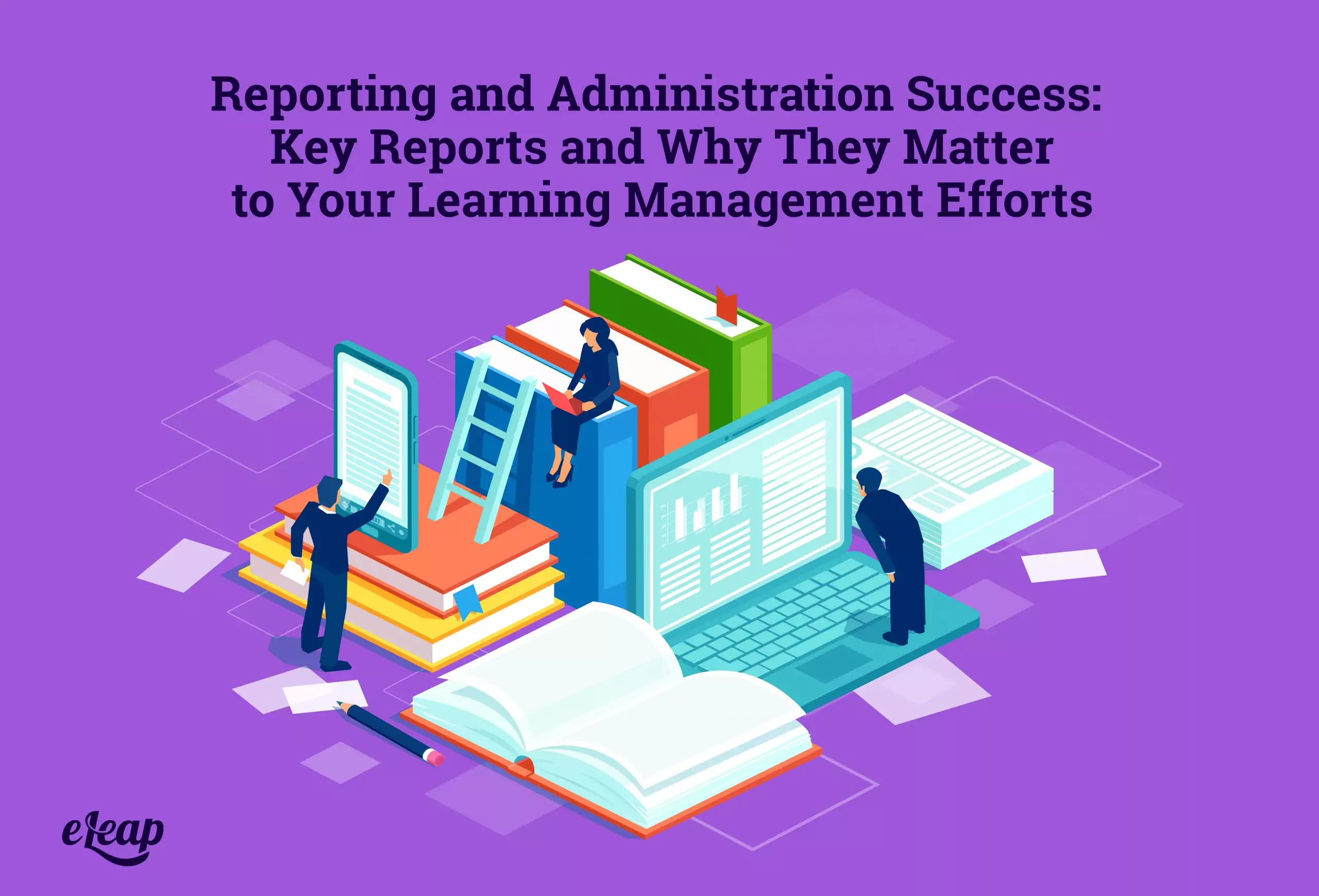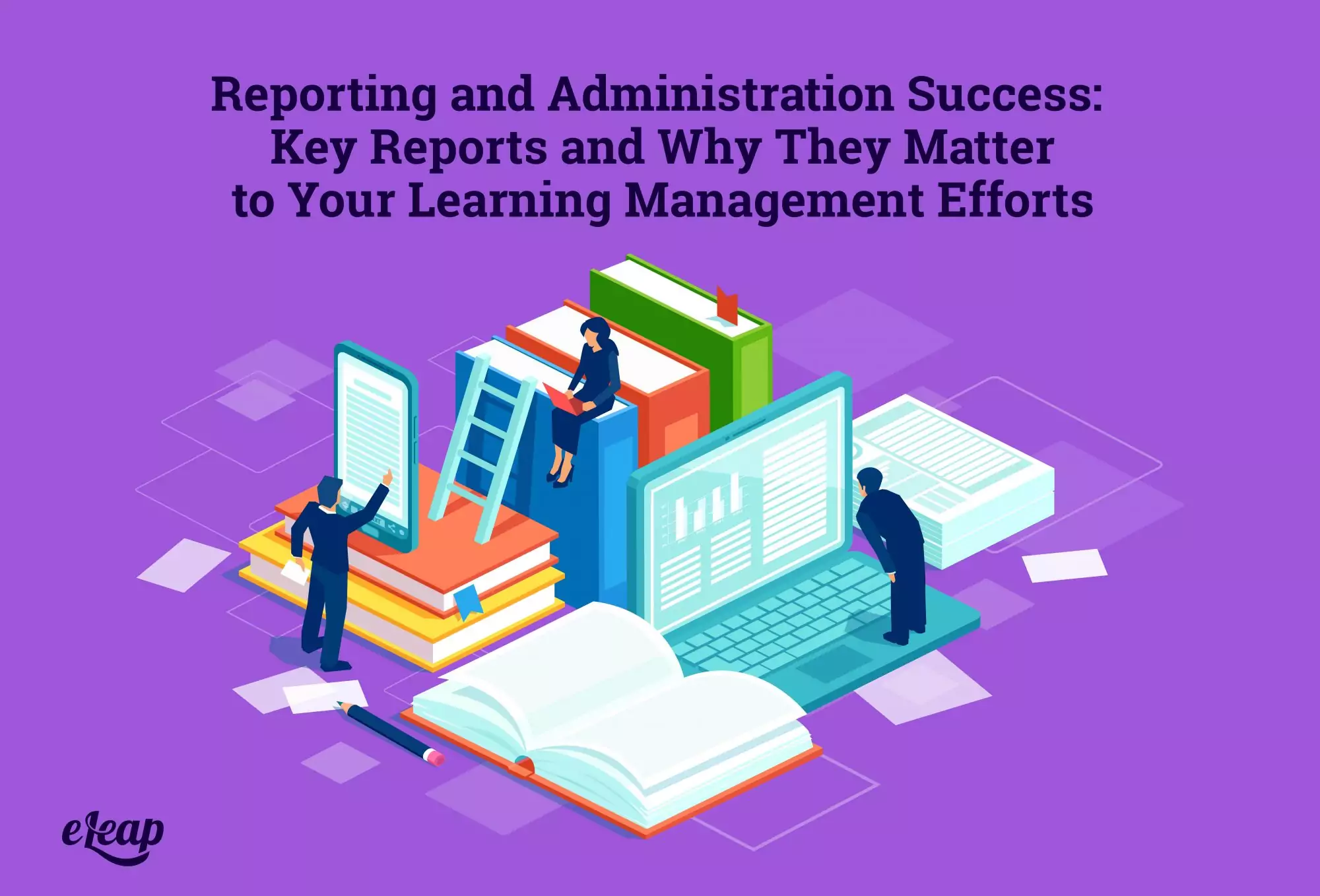Reporting and Administration Success: Key Reports and Why They Matter to Your Learning Management Efforts

A modern learning management system (LMS) offers streamlined access for learners, but also provides powerful tools for administrators. One of the most overlooked and misunderstood tools is the collection of reports available through your LMS dashboard. Using these reports correctly is the key to leveraging the system’s full capabilities and being able to manage your organization’s learning and development efforts. The reporting and administration function of the learning management platform is what makes such tools valuable to different stakeholders. This article will delve into some of the key reports that should be available in your lms and why they matter.
Yet, there is more that admins must know than just what reports are available. Report scheduling is also an important topic. We’ll address both the question of which reports are most important and how they should be scheduled in this blog post.

Why Does Report Scheduling Matter?
Before we dive into the types of reports or when they should be scheduled, let’s take a quick look at why scheduling matters in the first place. Isn’t it enough that they are available? Not remotely. That’s only part of the value offered.
Reporting against skills and development targets is critical. Most LMSs today are designed to put that sort of information right in front of you, usually through a centralized dashboard. The promise is that admins will save time dealing with fragmented information.
The challenge is that, while this data is readily available, administrators often spend a great deal of their time locating and serving it up to others in an ad hoc fashion. They can more easily find it, but they’re not saving the promised time because the organization has failed to leverage one specific capability – report scheduling.
In a nutshell, report scheduling lets you set it and forget it. You decide what reports are generated, when they are generated, and even how they are distributed. Scheduling is the key to recapturing your schedule and being in control of your time once more.
Reporting and Administration: Which Reports and When?
The modern LMS can offer up a wide range of reports. That can make it challenging to set reporting frequency and delivery. There’s also the question of variety. Your organization’s needs will likely vary from another.
However, for all that, there are some reports that most organizations require. In this section, we will detail which reports your stakeholders most likely need and why they’re important. With reporting and administration tools and systems getting more complex, it is also important to ensure there’s a balance so that report consumers are not getting overwhelmed.
Course Status
Few things are as important to charge as progress through a course. Keeping your finger on course status helps you and other stakeholders know when learners have started a particular course, where they stand in terms of completion, and their score(s) – three critical pieces of information. Course status reporting is all about learner progression and it should be set up so that these reports are generated with the frequency that your organization needs. For most, this will be weekly, but other configurations are also possible.
Missed Date
Some types of learning are time-sensitive, but tracking learner completion can be challenging. The miss due date report highlights which employees have not completed their training promptly and gives you the means to encourage them to move forward. Again, set this report so that it’s generated as frequently as you need it. That might be weekly or monthly.
Results
There are several purposes to your training initiative. One of those is to identify skills gaps. Assessment results reports allow you to analyze the results of your training efforts and pinpoint where those gaps lie. With that information, you can then change the paradigm by adding new content to close gaps and build a stronger, more capable workforce. However, note that this can also shed light on the quality and effectiveness of your learning material. A high failure rate may be a sign that you need to revisit the structure, format, or content of a particular section.
Module Completion
While course completion can give you a high-level overview of learner progress through an entire progression, module completion reporting gives you a more granular look at how your people are doing. With this report, you can pinpoint which learners have completed which modules, where they’re spending the most time, track scores across modules to determine which ones are the most challenging, and more. Based on that information, you can alter the module content, format, or flow, or you can make other adjustments.
Learner History
Often, you will need to track learner progression overall – their total history within your learning and development initiative. This could be for professional CE needs, or it could be simply to ensure that everyone is where they need to be, for upskilling and closing skills gaps, or other reasons. Learner history reports give you that information, and you can schedule them to be generated as you need them.
Tips for Report Scheduling
On the surface, report scheduling seems pretty cut and dried. However, there are some important tips to understand, as they will make the process simpler and easier.
- Know Who Needs to Know – When you set your report schedules, make sure you’re pegging generation and delivery to a need-to-know basis.
- Know When They Need to Know – Get with your stakeholders and find out when they need the various reports and try to coordinate across the board so that you’re only generating reports when they’re necessary.
- Nonpeak Hours – You’ll notice that generating and delivering reports is resource-intensive and may slow down your LMS. That can have negative implications for learners who are actively trying to complete modules. Schedule report generation and delivery for nonpeak hours to alleviate that problem.
- Know Downtime Requirements – Work with your IT team or other stakeholders to plan ahead so that you’re not trying to generate reports when the network will be scheduled for maintenance or other downtimes.
Conclusion
In the end, reporting is critical, but it is just as important that you can schedule the right reports at the right time and get them into the hands of the right people. With the tips we’ve covered above, that should be a little simpler to accomplish. Do you have any tips to share regarding report generation and scheduling? Share them in the comments below!
While we have covered reporting and administration (a little) in this article, don’t forget other aspects of system integration. If your LMS allows for an open API or some other integration options, consider adding these to your tool kit as the LMS data could be fed into your existing reporting system to enhance the quality of your overall data analytics program.